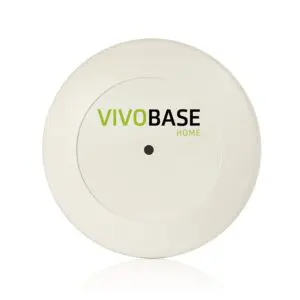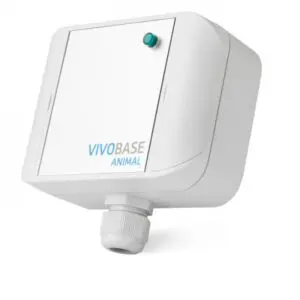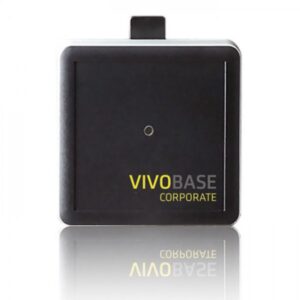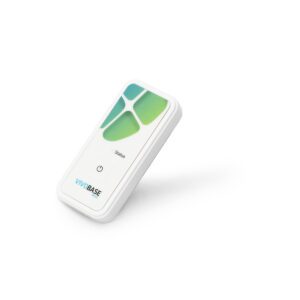
ELECTROSMOG – THE STATE OF SCIENTIFIC INVESTIGATIONS
Electrosmog has been shown in numerous studies to be harmful to humans, animals, and plants. However, the state of scientific investigations into electrosmog is in flux – as is the scientific consensus. We believe that electromagnetic frequencies do affect our health, which is why we developed our VIVOBASE Family of devices.
For those interested in staying (or becoming) educated on the matter, the information platform EMF portal of the RWTH Aachen systematically compiles scientific research findings on the effects of electromagnetic fields (EMF) and makes them available in English and in German. We recommend that you keep yourself informed about electrosmog and the damage it causes, as well as any preventive measures that you can take.
Electromagnetic field induced biological effects in humans
Electromagnetic hypersensitivity–an increasing challenge to the medical profession
The effects of prenatal and postnatal exposure to electromagnetic field on rat ovarian tissue
Impacts of smartphone radiation on pregnancy: A systematic review
Report of Partial findings from the National Toxicology Program Carcinogenesis Studies of Cell Phone Radiofrequency Radiation in Hsd: Sprague Dawley ® rats
Authors: Wyde ME; Cesta MF; Blystone CR; Bucher JR; Elmore SA; Foster PM,
Hooth MJ, Kissling GE, Malarkey DE, Sills RC, Stout MD, Walker, NJ, Witt KL, Wolfe MS
Conducting the study: National Toxicology Program (NTP) within the National Institute of Health of the US Government (Sponsoring US$ 25 million)
Source: http://biorxiv.org/content/early/2016/06/23/055699
Date: 23 June 2016
Information: n=1260 animals (rats). The animals were irradiated for up to 106 weeks with up to 900 megahertz (lower mobile radio standard).
Findings: The findings of the study show that mobile phone radiation can lead to tumours. To be more precise, two types of cancer (schwannoma, glioma) and pre-cancerous cell changes (hyperplasia of glial cells) were documented in a number of rats (46 heart and brain tumours among 540 irradiated male rats; female rats = no tumours). These findings corroborate the appraisal by the IARC (International Agency for Research on Cancer) that mobile phone radiation is potentially carcinogenic.
Tumour promotion through high-frequency electromagnetic fields in combination with carcinogens
Authors: Klose, M; based on the research of Tillmann and Lerchl et al (2010)
Conducting the study: German Federal Office for Radiation Protection (BfS)
Source: https://doris.bfs.de/jspui/handle/urn:nbn:de:0221-2015031812720
Date: March 2015
Information: This study involving experiments on animals investigated whether high-frequency electromagnetic fields of the mobile radio standard UMTS (1.97 GHz) can promote the development and growth of tumours without itself causing the formation of tumours. A pilot study by Tillmann et al. (2010) reported tumour-promoting effects of high-frequency electromagnetic fields. These indications should be investigated.
Findings: For the most part, the findings of the pilot study were able to be confirmed and expanded. In both studies, the number of tumours (carcinomas and adenomas) in the liver and lung have risen in the combination groups as a result of mobile phone radiation
STUDIES ON VIVOBASE PRODUCTS
Below you will find scientific evidence from VIVOBASE in collaboration with the accredited BION Institute which substantiates the functionality and operation of VIVOBASE devices. The BION Institute is certified as an official research centre in accordance with SICRIS (Slovenian Current Research Information System) under registration number 53760410000.
Studies carried out in cooperation with the BION Institute have shown that the parameters of body temperature, skin resistance, muscle activity and respiratory rate are optimised significantly when the VIVOBASE FAMILY is used. This has positive implications for the metabolism, inner equilibrium and oxygen capacity. The devices have less significant impacts on the body parameters of pulse and depth of breathing.
The studies are structured as followed in accordance with recognised scientific standards: Prospective test set-up (criteria to determine the mode of action were determined in the run-up to the study), placebo exempt (during the course of the study, none of the test subjects knew whether the VIVOBASE devices were switched on or off), double blind (during the course of the study neither test subjects nor assistants knew whether the VIVOBASE devices were switched on or off), and the principle of random selection (relevant criteria, such as age, gender, test time, etc. were distributed more or less equally in both test groups, meaning with VIVOBASE devices either switched on or off).
Test report 1 – Energy influence of the VBH on the human organism
Study: Test report for energy influence on human organism for the product VBH
Date: 2. November to 11. November 2016Test subjects: 10 test subjects ranging from 25 to 55 years of age (7 women and 3 men)
Objective: To determine the impact of the VIVOBASE HOME on physiological body parameters, e.g. skin resistance, pulse, muscle activity, respiratory rate, body temperature).
Test set-up: The test subjects were kept in a separate room in which the measuring equipment for determining the physiological parameters and a computer were located. In order to eliminate external influences, the test subjects were alone in the room during the test. The physiological parameters of the test subjects were measured continuously for approx. 30 minutes. The VIVOBASE HOME was located in an adjacent room – and was switched on and off by a third person – at a linear distance of approx. 5 metres from the test subject.
Findings: The most significant findings were the effects of VIVOBASE HOME on the skin resistance, respiratory rate and body temperature. The “perfect” skin resistance was achieved more quickly when the VIVOBASE HOME was switched on. This means that the test subjects were more “relaxed”, that is, less stressed. Moreover, body temperature was also found to improve by switching on the VIVOBASE HOME. In combination with the improved skin resistance, this results in improved metabolism in the test subjects. Furthermore, an improved respiratory rate was documented in the test subjects when the VIVOBASE HOME was switched on.
Test report 2 – Protective effect of the VBH with regard to WIFI routers
Study: Test report for protective influence on human organism against Wireless Router Radiation for the product VBH
Date: 24. October to 4. November 2016
Test subjects: 10 test subjects ranging from 25 to 70 years of age (7 women and 3 men)
Objective: To determine the effect of VIVOBASE HOME on electromagnetic radiation (WIFI) by means of changes to physiological body parameters, such as skin resistance, pulse, muscle activity, respiratory rate, body temperature.
Test set-up: 4 different test combinations were carried out in total (Wi-Fi on and VBH on; Wi-Fi on and VBH off; Wi-Fi off and VBH on; Wi-Fi off and VBH off). These four combinations were carried out on four different days. The test subjects were kept in a separate room in which the measuring equipment for determining the physiological parameters and a computer were located. In order to eliminate external influences, the test subjects were alone in the room during the test. The physiological parameters of the test subjects were measured continuously for approx. 30 minutes. The VIVOBASE HOME was located in an adjacent room (switched on and off by a third person) at a linear distance of approx. 5 metres from the test subject. The WIFI router was placed at a distance of 1 metre from the test subject (concealed).
Findings: The most significant finding was the protective effect of the VIVOBASE HOME with regard to the positive changes to the physiological parameters. In terms of skin resistance, a “calmer physical state” was able to be measured when VIVOBASE HOME was switched on. In terms of the respiratory rate, “less stress or strain” was able to be measured when VIVOBASE HOME was switched on. In terms of breathing, it was able to be measured that test subjects breathed with fuller lungs, and as a consequence increased oxygen capacity when the VIVOBASE HOME was switched on. In terms of the body temperature, a “better metabolism“ was induced when the VIVOBASE HOME was switched on. It took several minutes for the parameters pulse and depth of respiration to change. In summary, all parameters improved on average by 62.5% as soon as the VIVOBASE HOME was switched on.
Test report 3 – Protective effect of the VBH with respect to DECT radiation
Study: Test report for protective influence on human organism against DECT Radiation for the product VBH
Date: 2. November 11. November 2016
Test subjects: 10 test subjects ranging from 25 to 55 years of age (7 women and 3 men)
Objective: To determine the effect of VBH on electromagnetic radiation by means of changes to physiological body parameters, such as skin resistance, pulse, muscle activity, respiratory rate, body temperature.
Test set-up: Two different test combinations where carried out in total (DECT on and VBH on; DECT on and VBH off). These two combinations were carried out on two different days. The test subjects were kept in a separate room in which the measuring equipment for determining the physiological parameters and a computer were located. In order to eliminate external influences, the test subjects were alone in the room during the test. The physiological parameters of the test subjects were measured continuously for approx. 30 minutes. The VIVOBASE HOME was located in an adjacent room – and was switched on and off by a third person – at a linear distance of approx. 5 metres from the test subject.
The two tests were divided into three sections:
Preparation: Test structure and measurement of body parameters before the test (2 minutes in total)
Using the telephone: The test subjects made a phone call for a total of 5 minutes using a DECT telephone held to their ear.
Sitting: The DECT telephone was placed at a distance of 5-10 centimetres from the head of the test subject. The test subjects did not make a phone call during this time (18 minutes). The telephone was in standby mode.
Findings: The most significant finding was the protective effect of the VIVOBASE HOME with regard to the positive changes to the physiological parameters muscle activity. If the VIVOBASE HOME was switched on, the BION Institute was able to determine that the test subjects had more energy and strength and that, with respect to body temperature, their metabolism improved. It took several minutes for the parameter pulse to change. On average all parameters improved by 31.3% as soon as the VIVOBASE HOME was switched on.
Test report 4 – Influence on the molecular structure of water with regard to the VBH
Study: Test report of subtle influence on dynamic water structure for the product VBH
Objective: Determining the physico-chemical effect of the VIVOBASE HOME on electromagnetic radiation with the aid of the BionEvapo ® study. BionEvapo® Study: A standardised, scientific study for determining changes in the structure of water caused by external influences. To this end, water drops are exposed to various external influences and observed under a microscope. After the water molecules have evaporated, the remaining minerals are analysed.
Test set-up: The water molecules were investigated under the influence of mobile phone radiation (switched on and switched off) when the VIVOBASE HOME was switched on and when it was switched off. To do this, two glass beakers were filled with water. 14–16 water drops from each beaker were placed under a microscope (Evapo-Test T0). One beaker was then left in the laboratory and the other beaker was placed in a separate room in which the VIVOBASE HOME (switched on) and a mobile phone were located. During the test, the mobile phone was switched on and off and connected to a WIFI router. The water beaker was then brought back into the laboratory and the water drops were analysed again (Evapo-Test T1). This test was carried out twice on two different days.
Findings: Using the BionEvapo® method it was proven that the VIVOBASE HOME has a considerable influence on the water molecules. The negative influence of the mobile phone was almost offset by the use of the VIVOBASE HOME.
Studies carried out in cooperation with the BION Institute have shown that the parameters of body temperature, skin resistance, muscle activity and respiratory rate are optimised significantly when the VIVOBASE FAMILY is used. This has positive implications for the metabolism, inner equilibrium and oxygen capacity. The devices have less significant impacts on the body parameters of pulse and depth of breathing.
The studies are structured as followed in accordance with recognised scientific standards: Prospective test set-up (criteria to determine the mode of action were determined in the run-up to the study), placebo exempt (during the course of the study, none of the test subjects knew whether the VIVOBASE devices were switched on or off), double blind (during the course of the study neither test subjects nor assistants knew whether the VIVOBASE devices were switched on or off), and the principle of random selection (relevant criteria, such as age, gender, test time, etc. were distributed more or less equally in both test groups – VIVOBASE devices switched on or off.
TEST REPORT 1 – PROTECTIVE EFFECT OF THE VIVOBASE MOBILE WITH REGARD TO THE RADIATION FROM MOBILE PHONES
Study: Test Report for protective influence on human organism against cell phone radiation for the product VIVOBASE MOBILE
Date: 18. October to 21. October 2016
Test subjects: 10 test subjects ranging from 25 to 75 years of age (8 women and 2 men)
Objective: To determine the effect of VIVOBASE MOBILE on electromagnetic radiation (mobile phone) by means of changes to physiological body parameters, such as skin resistance, pulse, muscle activity, respiratory rate, body temperature.
Test set-up: Two test combinations were carried out in total (mobile phone on VBM on; mobile phone on VBM off). These two combinations were carried out on two different days. The test subjects were kept in a separate room in which the measuring equipment for determining the physiological parameters and a computer were located. In order to eliminate external influences, the test subjects were alone in the room during the test. The physiological parameters of the test subjects were measured continuously for approx. 30 minutes. The test subjects had the VIVOBASE MOBILE in their trouser pockets. However, the test subjects were not aware at any time whether the VIVOBASE MOBILE was switched on or off.
The two tests were divided into three sections:
- Preparation: Test structure and measurement of body parameters before the test (2 minutes in total)
- Using the telephone: The test subjects made a phone call for a total of 5 minutes using a DECT telephone held to their ear.
- Sitting: The DECT telephone was placed at a distance of 5-10 centimetres from the head of the test subject. The test subjects did not make a phone call during this time (18 minutes). The telephone was in standby mode.
Findings: The most significant finding was the protective effect of the VIVOBASE MOBILE with regard to the positive changes to the physiological parameters muscle activity. If the VIVOBASE MOBILE was switched on, the BION Institute was able to determine that the test subjects had more energy and strength and that, with respect to body temperature, their metabolism improved. It took several minutes for the parameter pulse to change. On average all parameters improved by 31.3% as soon as the VIVOBASE MOBILE was switched on.
PROTECTION AT YOUR HOME
-
-
-
-
VIVOBASE Move
$369.00 Select options This product has multiple variants. The options may be chosen on the product page




